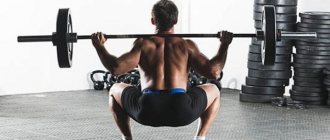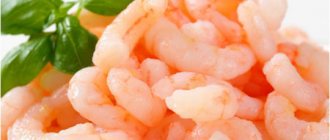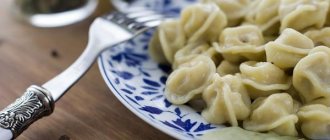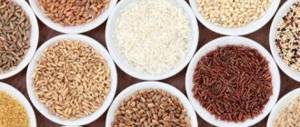What is pancreatitis
The diagnosis of pancreatitis is made to patients suffering from inflammation of the pancreas. The causes of this pathology can be different, but the most common of them are:
- cholelithiasis;
- genetic predisposition;
- taking certain medications;
- mechanical damage and injury;
- alcohol abuse;
- abuse of fatty, smoked and other unhealthy foods.
Statistics: the average age of incidence of chronic pancreatitis has decreased from 50 to 39 years. The frequency of detection of the disease in children in Russia is 9-12 cases per 100,000.
Regardless of the prerequisites for development, the disease follows the same pattern. The pancreas begins to produce an increased amount of enzymes, but they do not enter the intestines due to a violation of the outflow of secretions. As a result, digestive problems arise, severe pain in the abdomen (stomach area), the patient suffers from diarrhea, first loses fat and then muscle tissue.
General recommendations
You should not do exercises that involve sudden, jerky movements. Running, jumping, intense strength exercises, heavy lifting, and squats, which create excess intra-abdominal pressure, are contraindicated.
You can and even need to do general strengthening physical education at a slow or medium pace. The average training duration is 20-30 minutes. Regularity – daily.
You need to start training no earlier than an hour and a half after eating. And end, if possible, with complete relaxation. Just lie on your back at rest for 5-7 minutes, with your arms extended along your body, palms down, and your legs spread.
For chronic non-acute pancreatitis, the following will be beneficial:
- swimming;
- calm walking (1-2 km);
- abdominal exercises (with a small number of repetitions);
- exercises on the legs and torso with a gradual increase in load.
The therapeutic effect for pancreatitis is provided by carefully selected breathing exercises and diaphragm training. This is a separate course from physical exercises; we will dwell on it in detail.
Features of the construction of physical activity for pancreatitis
When choosing a type of sports activity, you need to pay attention to a number of factors.
First of all, consider the degree of development and intensity of the disease. In acute forms of pancreatitis, as well as at the stage of exacerbations of the chronic form, most types of physical activity are contraindicated. At such moments, sports and excessive physical activity must be postponed, and preference should be given to the principle of “cold, hunger and rest.”
Age characteristics are also one of the main factors on the basis of which a physical activity program for pancreatitis is formed. It should be noted that some exercises recommended for this disease may be strictly prohibited in the event of the development of other concomitant ailments. Therefore, consultation with specialists is a must.
Sports activities for pancreatitis should be organized in such a way that when forming a program, the current physical characteristics and capabilities of the body that were inherent in the patient before the development of the disease are taken into account. People who previously had high athletic performance can easily bear a significant load, which cannot be said about those who have not previously been actively involved in sports.
An individual approach to each patient is a vital condition for selecting an effective and safe sports program.
The effect of physical activity on the pancreas
Moderate physical activity always has a positive effect on human health.
The intensity and frequency of exercise must be consistent with the person’s level of training, the state of his body, age and a host of other criteria.
If the ratio norms are violated, even a completely healthy person is at risk.
When it comes to physical exercise for pancreatitis, there are many more restrictions. The fact is that when lifting weights or performing certain movements, the abdominal cavity experiences pressure. With inflammation of the pancreas, this is especially dangerous, since the parenchyma of the organ is already swollen due to the inflammatory process. The impaired outflow of bile is aggravated, stagnant processes occur, which provokes an exacerbation of the disease. If there are stones in the ducts, there is a possibility that surgical treatment will be necessary.
Excessive physical activity can cause stones to move through the ducts of the gland, which requires surgical intervention.
It is also worth considering that with chronic pancreatitis, insulin synthesis may be impaired. Glucose uptake is required to maintain energy levels. When normal maintenance of this process is impossible, diabetes develops. Thus, when the body is overloaded, not only an exacerbation of pancreatitis is possible, but also the development of other pathologies against its background.
When can I exercise?
The patient should not completely exclude physical activity from his life. Physical therapy is considered the most useful and safe type of activity. Regular exercise combined with proper breathing improves metabolism and blood flow in the abdominal organs. Moderate physical activity has a beneficial effect on the nervous system. The complex may undergo changes depending on the stage of pancreatitis.
In the chronic stage
Physical education helps to avoid exacerbation of the disease. Permitted exercises include exercises aimed at maintaining the tone of the abdominal muscles. However, their use should be limited. Most of the load falls on the limbs. For patients with pancreatitis, exercises aimed at developing flexibility are suitable.
You need to eat 1.5-2 hours before training. The pace for performing exercises should be medium or slow. Intense activities may increase abdominal and blood pressure. The emphasis should be on diaphragmatic breathing.
In acute form
If the patient has an exacerbation of pancreatitis, physical education must be temporarily abandoned. You can train 1-2 weeks after the symptoms of the disease disappear.
Cholecystopancreatitis
Diseases accompanying pancreatitis, such as cholecystitis, require a more strict selection of exercises, so in this situation you cannot do without consulting a doctor.
With the development of cholecystitis, you need to select exercises more carefully.
Recommended sports for inflammatory processes
Answering the question “is it possible to play sports with pancreatitis,” the vast majority of experts talk about the need for some gradation of sports, on the basis of which lists of permitted and not recommended sets of exercises are formed.
During periods when there is a certain decline in the symptoms of chronic inflammatory processes, participation in a number of sports disciplines is allowed and even necessary.
The load that falls on the body during physical therapy exercises must be “applied” in doses. At the same time, it is recommended to carry out various types of exercises under the supervision of specialists who can record the results and gradually add load to an adequate level.
The development of physical therapy exercises for patients with pancreatitis should be carried out by a qualified specialist based on an analysis of the individual state of the body of each patient separately. Such an individual approach allows you to easily overcome possible problems arising from an increased level of physical activity.
The exercises included in the course of breathing exercises have virtually no contraindications and are applicable to all categories of patients, regardless of age.
Swimming for pancreatitis, subject to a number of circumstances, can be recommended for patients, since it is this kind of physical activity that gives the most positive effect for the whole body.
In addition to swimming, the set of recommended exercises may include elements from yoga or Nordic walking, as well as exercises for the back muscles, abs, arms and legs.
Absolute contraindications for sports
In some cases, gymnastics and other training can lead to complications and provoke the transition of the disease to a more severe stage. That is why there are pictures where any physical activity is not recommended at all.
The list of restrictions includes the period of exacerbation, as well as acute forms of the inflammatory process in the pancreas. You cannot play sports if you have a history of concomitant diseases that have led to disruption of the functionality of internal organs.
Training is contraindicated when there is mechanical injury to an organ or surgery on the pancreas. In these situations, sports can be played after rehabilitation and only with the permission of the attending physician.
If you have pancreatitis, you should not run, jump, skip, or lift weights. Therefore, long or high jumps, long-distance running, strength aerobics, and exhausting workouts in the gym should be left until the person’s well-being improves.
Each case of the disease has certain characteristics, since the reaction of the body of different patients, even under identical conditions, can differ.
Therefore, the decision on the advisability of this or that training remains with the doctor.
Dangerous sports for the body
It is safe to say that most sports that involve significant stress on the human body are either completely banned or subject to significant restrictions during the course of the disease.
Thus, we can say that pancreatitis and boxing, especially in the acute form or during an exacerbation, are categorically incompatible. The reason for this is the difficult training process, as well as the constant heavy and sharp blows that athletes who choose this sport are exposed to.
When answering the question of many patients “is it possible to run with pancreatitis,” most experts answer in the negative, since running involves sudden movements that have a negative effect on pancreatic tissue. Moderate walking and walking are more beneficial.
Is it possible to lift weights with pancreatitis? Another frequently asked question, the answer to which cannot be unambiguous, since it depends on the general condition of the body, although there is a general recommendation for possible avoidance of such actions.
Fitness for pancreatitis also often falls into the category of prohibited sports disciplines that can have a negative impact on the clinical picture and further development of the disease.
At the same time, it is necessary to take into account that each case of the disease is individual, since the reaction of the body of different people, even under the same conditions, can be unpredictable. That is why decisions on whether to allow or prohibit certain sports or exercises should remain with the attending physician.
Cases of a categorical ban on sports for patients
In some cases, playing sports in any form can cause the disease to develop and progress to a more severe stage. That is why doctors in some situations prohibit patients from any physical activity.
The list of such conditions includes:
- periods of exacerbation, as well as acute forms of pancreatitis;
- concomitant diseases that affect internal organs;
- periods after injuries to the pancreas;
- rehabilitation periods after surgery.
When choosing the type of load, it is necessary to take into account that with this disease, performing exercises associated with sudden movement, jumping, jumping or lifting weights is prohibited.
Based on this, we can say that running exercises, as well as long or high jumps and strength aerobics, should be abandoned until recovery or improvement of the clinical situation.
In general, depending on the individual characteristics of the body, each sport should be discussed with the attending physician, who will help speed up the rehabilitation process and return to the normal training process.
Breathing exercises and yoga for pancreatic inflammation
- Elimination of stagnation.
- Improving enzyme synthesis.
- Launching the processes of restoration of damaged tissues.
Proper breathing helps speed up metabolic processes in the body, which leads to training of deep muscles, allows you to reduce body weight, including due to the breakdown of “dangerous” visceral fatty tissue.
Yoga includes physical exercises that are conditioned by static muscle tension and flexibility and proper breathing. Meditation practices help achieve psychological balance. Against the background of pancreatitis, it is necessary to perform the Hatha Yoga complex, which involves performing light asanas that any patient can do. Effective asanas include training: mountain, horizon, triangle, warrior and tree.
In the morning, it is permissible to do exercises related to the “Surya Namaskar” technique. This is a “welcome to the new day”, which includes positions that are performed in a certain sequence. Classes are “circular”. In other words, when a person reaches the central pose, he needs to perform the exercises in the reverse order.
Diet Requirements
Diet for people with pancreatitis, especially if they exercise, is key. Essentially it is a matter of their survival.
First of all, you will have to give up bad habits. It is recommended to eat meals in small portions, 6-7 times a day. Food should be chopped, boiled, steamed. The body really needs easily digestible proteins of animal origin. They help restore damaged pancreatic tissue. If animal fats are poorly digestible, soy protein completely replaces them.
| Recommendations | Products |
| Useful | porridge boiled in water (especially buckwheat, oatmeal), dietary meat (chicken, turkey, rabbit, lean beef), vegetable soups, lean fish, steamed omelet, weak tea. Experienced athletes assure that beef cannot be excluded from the diet. It contains a vital complex of minerals and protein. |
| Harmful | fatty, spicy, fried foods, meat and fish broths, smoked meats, mushrooms, coffee, spices, alcohol, sour fruits and berries (lemon, some varieties of apples, cranberries). |
Important: playing sports with pancreatitis is not contraindicated if you follow the general rules: avoid stress, follow a sleep and rest schedule, and diet. If pancreatitis is accompanied by other diseases (for example, it often occurs with cholecystitis), it is wiser to seek advice about physical activity from your doctor.
Sports nutrition for pancreatitis
To make exercise more effective, you need to carefully monitor your diet. Diet for pancreatitis is an essential component of recovery. There are several basic principles, the violation of which can lead to the resumption of the inflammatory process in the organ:
- Quitting alcoholic beverages and smoking.
- Fractional meals from 6 to 8 meals per day.
- The food is served pureed through a sieve or crushed using a blender.
- It is preferable to boil or steam it.
- Food should be fresh and warm at the time of consumption.
Sports nutrition has its own characteristics. This menu contains more proteins, which, compared to fats, are not stored by the body. In the chronic form of pancreatic disease, sports nutrition consists mainly of animal proteins, which are easily digestible. A menu with an emphasis on them will contribute to the rapid regeneration of damaged organ tissue.
In addition to protein, the diet must include cereals and cereals. It is recommended to cook porridge in water, without adding milk. Nutritionists advise not to avoid lean meats, dried bread, boiled lean fish, vegetarian soups, vegetables and fruits, milk with a minimum percentage of fat, weakly brewed tea, steamed egg white omelette and other low-fat foods.
Bodybuilding and pancreas diseases
A sport such as bodybuilding is very common, especially among men. It is aimed at increasing muscle mass and improving muscle definition as a result of intense strength training and a specially selected sports nutrition diet.
Permissible loads
Bodybuilding or bodybuilding involves performing exercises that involve intense strength loads that require lifting weights. When the patient resorts to performing such physical exercises, this leads to an increase in intra-abdominal pressure. In this case, there is a disruption of the blood supply to the tissues of all intra-abdominal organs, including the pancreas, compression of its ducts, and disruption of the outflow of pancreatic juice into the intestinal lumen. All this negatively affects the condition of the affected pancreas.
Due to the severity of the exercise, bodybuilding puts too much stress on the pancreas, so this sport is not recommended for patients with pancreatitis.
Is it possible to return to training after an exacerbation?
If the patient was involved in bodybuilding before he was diagnosed with pancreatitis, then when a long-term stable remission is achieved, the doctor may allow him to resume training. Important conditions for such permission are the patient’s ideal health, as well as normal results of laboratory tests and ultrasound. The degree of load for a patient with pancreatitis must still be significantly reduced: it is impossible to lift too heavy a weight (the barbell press is completely excluded from the training program), the breaks between approaches should be increased, and the number of repetitions of the exercises should be reduced. Once every six months, the patient must undergo a comprehensive examination, even if he is feeling well.
What sports nutrition can I use?
To grow muscle fibers and increase muscle volume, you first need building materials - proteins, amino acids.
Most protein shakes that bodybuilders use to build muscle mass contain, in addition to a complex of proteins, amino acids, vitamins, a large amount of simple carbohydrates, preservatives, and flavorings. Light carbohydrates are needed to saturate the body with energy for intense training. The absorption of glucose requires increased production of insulin, that is, the load on the endocrine section of the pancreas increases. And preservatives and other synthetic ingredients are very harmful to the digestive system, especially the pancreas.
Pancreatitis and bodybuilding
The popularization and cult of a beautiful body brings more and more people to gyms. Is it possible for a patient with pancreatitis to exercise such a load?
Such training is surrounded by many harmful myths, one of which is the benefits of bodybuilding during the inflammatory process in the gland. This is explained by the strengthening of the abdominal muscles and the healthy protein diet that athletes follow. Is it really:
- Yes, when bodybuilding, the menu should include a lot of protein, because protein is the main building material for muscles.
A diseased pancreas needs protein to repair damaged tissue and synthesize hormones. If most of the protein goes into building the muscle frame, then the regenerative capabilities of the gland will begin to decline. Despite the need for protein foods, protein bars are prohibited for use with pancreatitis - Taking protein shakes, bars, and other sports nutrition may not be safe for patients with pancreatitis.
- Intense loads can cause kinks in the gland ducts, increase intra-abdominal pressure and thereby provoke an exacerbation of the chronic process.
- This type of sport requires additional synthesis of insulin (a pancreatic hormone) in order to break down glucose, a source of energy.
The pancreas will have to produce more insulin, which can cause it to become exhausted. The need for more insulin than usual can lead to disruption of the beta cells of the islets of Langerhans, which are responsible for the synthesis of this hormone.
For patients with pancreatitis who have not previously engaged in this type of exercise, it is better not to start doing this. Beautiful six-pack abs are not worth the aggravation of pancreatitis.
Those people who have devoted their whole lives to this sport can continue training at the amateur level under the supervision of a doctor, starting with minimal loads. In parallel, the patient must monitor the level of glucose, pancreatic enzymes and other indicators of the functioning of this organ.
Bodybuilding requires performing sports exercises associated with heavy and intense loads, using force, and lifting large weights. This kind of physical activity during pancreatitis can cause an increase in intra-abdominal pressure, which will have an extremely negative impact on the patient’s condition.
Exacerbation of the disease can also be caused by other complications that arise as a result of strength sports training of bodybuilder patients:
- pathological changes in bile waste;
- recording changes in blood circulation in the tissues of all abdominal organs, including the pancreas;
- curvature of the gallbladder.
Heavy and intense loads for pancreatitis, which bodybuilding involves, are too much stress for the body. As a result of prolonged repetition of classes, there will be a threat of diabetes. With energy loads, metabolic processes also intensify, and decay products multiply in the circulatory system. After penetrating into the general channel, they are able to irritate organs and provoke an inflammatory process.
Reasons for stopping muscle growth
By eating right, engaging in permitted types of physical activity and getting plenty of rest, you are guaranteed to start gaining weight. However, be prepared for the fact that muscle gain may stop. This is a pressing problem faced not only by people with pancreatitis, but also by healthy athletes. The reasons for its occurrence may be:
- high energy expenditure (you spend more calories than you take in);
- lack of sleep;
- hormonal disorders;
- improper execution of exercises;
- lack of protein in the diet;
- change in metabolic rate;
- rapid fatigue and overtraining.
If muscle growth stops, talk to the doctor who is treating your pancreatitis, as well as consult with a nutritionist and, if possible, a professional trainer. You may need to change your diet and exercise schedule, take extra protein or vitamins, or change your daily routine. The support of specialists is extremely important at each stage of treatment and recovery of the body.
Sex and chronic pancreatitis
Patients, unfortunately, are not recommended to have sex frequently. Why? When having sex, there is a surge of adrenaline in the blood, and a large number of glucose cells enter the blood. Cells quickly wear out and do not have time to recover. The balance of carbohydrate cells is disrupted, and this leads to heart attack and stroke. During orgasm, a large amount of hormones and glucose are released into the blood of a man, and this has a negative effect on the pancreas. In addition to the pancreas, the thyroid gland also suffers during sex.
And for preventive maintenance of the body during periods of activation of the disease, it is recommended to perform a number of specially designed exercises and avoid serious physical activity.
Bodybuilding for pancreatitis
Unfortunately, doctors recommend that patients who have received such an unpleasant diagnosis follow a diet and lead a purely healthy lifestyle. Physical exercise and sports activities should be limited and strictly limited.
Patients with chronic pancreatitis should turn their attention to bodybuilding, because bodybuilding will not only improve your figure, but will also ensure excellent well-being, and will also help you get a positive charge. A few simple rules will help you start playing this sport without harming your health and without the risk of complicating the disease:
- Eat small meals several times a day. Let your food be rich in proteins and carbohydrates, do not include fried and spicy foods in your diet.
- Due to pancreatic disease, weight gain after exercise and physical activity will be slower, but do not despair, because the main thing is to constantly listen to your body.
- Together with your doctor and trainer, determine what your maximum load will be.
- Take more fluids than usual.
- It is advisable to conduct training before lunch.
- Avoid bodybuilding and other physical activities if your blood glucose levels become too high.
ul
What sports are suitable for pancreatitis?
Is sports acceptable for pancreatitis? A lot of doctors recommend certain types of sports for pancreatic pathology, on the basis of which they form a list of permitted exercises.
A list of types of physical education that are useful for organ disease.
- Swimming - this sport involves gentle movements, which allows you to relax the muscles of the body and normalize the activity of internal organs. Swimming at a low speed, your breathing will become even, your blood pressure and heart rate will increase slightly. This will have a beneficial effect on the entire body.
- Slow walking – walking with poles is particularly beneficial. Doing this sport outdoors will improve vascular tone and saturate the tissues with oxygen. Then the gland will be restored and the digestive process will normalize.
- Skiing - the pace is slow, the skiing terrain is flat. You cannot ski uphill or downhill due to the heavy load and risk of injury.
- Therapeutic exercise – breathing exercises, diaphragmatic breathing, yoga, qigong gymnastics.
- Callanetics, Pilates - practicing this sport is possible only with an instructor.
Breathing exercises for pancreatitis are the most useful.
These exercises for the pancreas were developed by Strelnikova. The technique can be performed at any time, it is important that the intestines and stomach are not full. The doctor will determine how many approaches and exercises are possible individually.
For pancreatitis, simple breathing exercises are performed 2 times a day every day, if the exercises are well tolerated. It is often performed in a supine position, with the limbs bent at the knees.
- First, take deep breaths and exhales, then draw in your stomach and hold for a short period of time.
- Repeat the initial exercise, only the stomach is already greatly inflated.
- Inhale halfway, hold the breath for 3 seconds, and the inhalation process is completed. The abdomen is inflated for 3 seconds, retracted for 6 seconds. Then the procedure is repeated, at the end the abdominal muscles relax.
- Exhaling, pull your abs in with force, stop breathing and relax. Inhale with your stomach, inflating it, exhale, pulling your abs towards your spine.
After completing the gymnastics, you need to rest. Each point is repeated 4 times.
In pathological conditions or diseases of the gland, a victim with pancreatic disease will not immediately see the effectiveness of respiratory exercises.
Recommendations for exercises and training
As soon as the acute stage of the disease passes, people leading a healthy lifestyle begin to think about resuming training. But extreme caution must be exercised here. Remember that running, fitness, as well as strength loads that involve holding your breath (deadlift, bench press, squats, etc.) are prohibited with pancreatitis. Permitted types of physical activity include:
- swimming.
- yoga.
- high-intensity training (exercise bike, rowing machine).
- race walking.
- physiotherapy.
You can choose any of these options, but be sure to get the approval of your doctor first.











